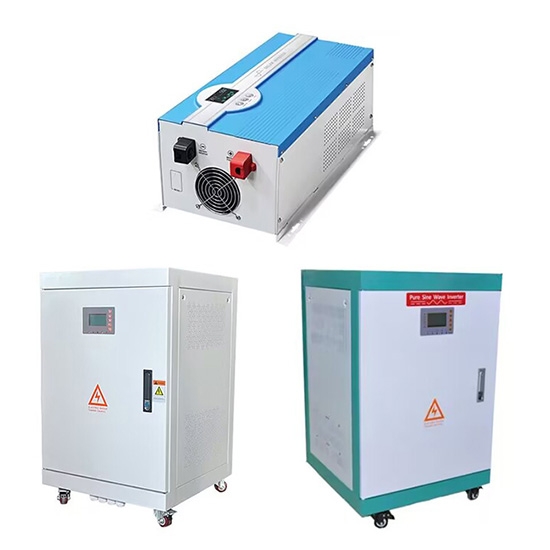An off-grid inverter is an independent power conversion system that does not rely on the public power grid and provides power by converting direct current to alternating current. Choosing the right size of off-grid inverter is important for ensuring stable system operation, improving power generation efficiency and economy. Choosing the right size off-grid inverter (or more accurately, the power and capacity of the inverter) depends on several factors, including the total power of the devices you want to power, the type of load (inductive or resistive), and whether you are planning for future energy needs. Here is a step-by-step guide to help determine the right size.
Determine the right size steps
Calculate your total load
List the devices you want to power: Include all the devices you plan to run with the inverter, such as lights, refrigerators, laptops, or water pumps.
Check each device's power: This can be found on the label or in the user manual.
- LED lights: about 10W per bulb
- Laptop: about 60-100W
- Refrigerator: about 500-800W (when running, but may have higher surges)
- Power tools: 1000W or more
Consider peak and surge power
Some appliances, especially those with motors (like refrigerators, air conditioners, or power tools), have higher surge power when starting, often 2-3 times their operating power. Choose a solar power inverter that can handle this peak surge.
Plan for continuous and surge power
Continuous power: The total power required for all appliances to run simultaneously.
Surge power: The additional power required for appliances with motors or compressors during startup.
For example, if you plan to run:
- Refrigerator 800W (surge 1600W)
- Laptop 100W
- Power tools 1000W (surge 2000W)
Your continuous power needs are about 1900W, and you need an inverter that can handle at least 3600W surges.
Inverter efficiency and power reserve
Inverters are not 100% efficient, so losses of about 10-15% when converting DC to AC are considered. It is usually a good idea to add some buffer (about 20-30%) to ensure your inverter can handle unexpected or future increases in power demand.
Final sizing
Calculate the total continuous power and make sure the inverter can handle surge loads as well. If the total continuous load is about 2000W, select an inverter of at least 2500W with a surge capacity of 4000W or more.
For example: If you plan to power a 2000W continuous load, a 3000W pure sine wave inverter will provide enough power while leaving some buffer for safety and potential future expansion.
Matching solar panels
Output power: The inverter needs to be able to handle the maximum power produced by the solar panels under optimal operating conditions. If the inverter capacity is too small, it may cause the inverter to be frequently overloaded, affecting system performance and lifespan.
Voltage and current range: Make sure the input voltage and current range of the inverter matches the output voltage and current of the solar panel.
Select inverter type
Pure sine wave inverter: Suitable for sensitive electronic devices (such as laptops, medical devices, or anything with a motor). These inverters provide cleaner power similar to grid power.
Modified sine wave inverter: Cheaper but less efficient. They may not be suitable for sensitive equipment or equipment with motors.
Inverter size recommendations
- Small equipment (basic appliances, small devices): 1000-2000W
- Medium equipment (power tools, refrigerators, TVs): 3000-5000W
- Large equipment (whole home off-grid, multiple appliances): 5000-10,000W
- Make sure the inverter voltage (12V, 24V, 48V) matches your battery bank.
